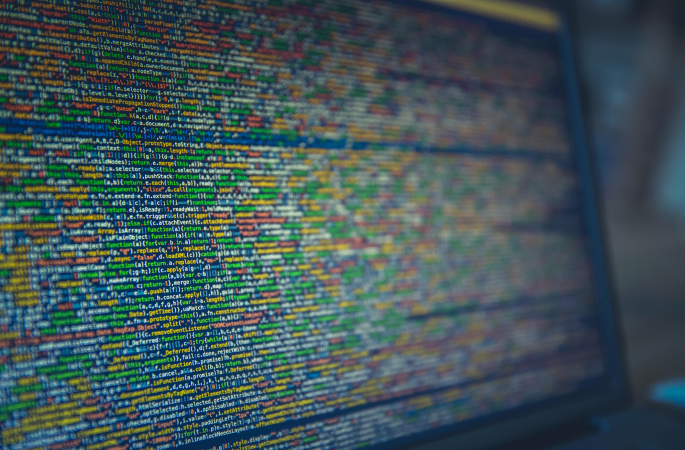Essential cybersecurity tools for your business

Benefit from effective IT support
Discover our all-in-one solution
Today, we can no longer ignore the cybersecurity in business. Threats are everywhere: ransomware, attempts to phishing, sneaky intrusions into your computer network... and the more your business grows, the more these risks increase. To avoid unpleasant surprises and best protect your data sensitive, it is necessary to deploy cybersecurity tools adapted to your needs.
In this article, we offer you an overview of the essential solutions to secure your information system. We will also see how to properly integrate them into your global strategy, because using high-performance software is not enough if your organization does not follow suit.
The need for effective cybersecurity in business
One cybersecurity solid, it is the key to protecting not only your computer network, but also the image of your structure and the trust of your customers. Flaws of security can be very expensive: file loss, data theft, damage to company reputation... Threats are multiplying, and no one is safe, whether you are a small SME or a large multinational.
That's why you need to look at IT security holistically. It's not just about installing an anti-virus and keeping your fingers crossed. This involves understanding the vulnerabilities of your environment (systems, web, applications, users) and to set up a cybersecurity toolkit complete.
List of tools needed for cybersecurity
Now let's move on to concrete things. Let's look at the main ones together cybersecurity tools to consider in order to protect your system and, ultimately, your business.
1. The firewall or firewall
The firewalls, or Firewall, is one of the historical elements of the computer security. It acts as a filter between the inside and the outside of your computer network. Concretely, it monitors incoming and outgoing traffic, blocking or authorizing certain flows according to pre-defined rules.
- Benefits :
- It prevents unauthorised access and blocks a lot of basic attacks.
- It can detect suspicious connections and alert you before it's too late.
- Disadvantages : Requires a good configuration, can generate false positives or block legitimate services if set up incorrectly.
2. Anti-virus
THEAnti-virus is a tool that no longer needs to be presented. It scans files for malicious signatures or behavior, detecting viruses, Trojans, and other unwanted software.
- Benefits : Easy to install, often offered in a free version (with fewer features).
- Disadvantages : It does not always detect all types of threats, especially zero-day threats (unknown at the time of analysis).
3. Anti-malware
Although it is sometimes confused with anti-virus,Anti-malware focuses specifically on the detection and eradication of malicious software (malware) such as ransomware, spyware or adware. It often offers more targeted protection than a traditional anti-virus.
- Benefits : Broader coverage against emerging threats, complements the action of the anti-virus.
- Disadvantages : May add to system resources, should be updated regularly.
4. Endpoint Detection and Response (EDR)
The solutions ofEndpoint Detection and Response monitor endpoints (computers, smartphones, tablets) in real time to identify risky behaviors.
- Benefits : Proactive detection, ability to react quickly, global vision on all endpoints.
- Disadvantages : Implementation and sometimes high costs, the need for specialized expertise to optimize alerts.
5. IDS/IPS (Intrusion Detection System/Intrusion Prevention System)
The systems ofIntrusion Detection System (IDS) And ofIntrusion Prevention System (IPS) Are intrusion detection software in the network.
- IDS : Detects suspicious activity and generates alerts, but does not necessarily prevent intrusion.
- IPS : Intervenes immediately to block malicious activity.
- Benefits : Continuous monitoring of network traffic, rapid intrusion prevention.
- Disadvantages : Complex configuration, possible traffic slowdown.
6. Vulnerability scanner
One vulnerability scanner sift through your systems, web applications or even your infrastructure to find potential flaws.
- Benefits : Regular detection of vulnerabilities, facilitates vulnerability management.
- Disadvantages : Can generate numerous false positives, requires rigorous monitoring to correct detected flaws.
7. MFA (Multi-Factor Authentication)
With the Multi-Factor Authentication, you use several authentication factors (password + SMS code, for example).
- Benefits : Significantly reinforces the security of access to accounts and applications.
- Disadvantages : May slow down or complicate the user experience, requires centralized management if deployed at scale.
8. IAM (Identity and Access Management)
The solutions ofIdentity and Access Management (IAM) help you manage the accesses and rights of your users. The aim is to apply the principle of least privilege: each employee only has the necessary access to their position.
- Benefits : Limits abuse and the risk of human error, simplifies identity management in the company.
- Disadvantages : Demanding deployment, sometimes involves a redesign of internal processes.
9. DLP (Data Loss Prevention)
The Data Loss Prevention (DLP) serves to prevent the leak or unauthorized disclosure of your data sensitive (confidential information, patents, customer files...).
- Benefits : Detects and blocks data exfiltration attempts, maintains business reputation.
- Disadvantages : May cause confidentiality issues, requires accurate data classification.
10. Data Encryption
The encryption consists in encoding the data so that it can only be read by people who have the decryption key. It can be applied to documents, emails, or databases.
- Benefits : Protect it data protection even if files are stolen or leaked.
- Disadvantages : Complexity of implementation, management of encryption keys essential.
Our advice on cybersecurity tools
Set up all of these cybersecurity tools is not enough to protect you 100%. Training your teams and regularly updating your software are just as essential. La cybersecurity, it's a set of best practices to adopt on a daily basis, not just a stack of sophisticated solutions.
What cybersecurity tool should you install first?
Even before you start buying a multitude of cybersecurity software, it is essential to assess your real needs. If you are starting from scratch, bet on:
- Firewall : basic filtering is essential.
- Anti-virus/Anti-malware : the first barrier against malware.
- MFA : securing access is the priority (especially for sensitive accounts).
- Vulnerability scanner : to quickly identify faults before it is too late.
- IDS/IPS : if your network starts to grow, an intrusion detection/prevention system is a real plus.
The idea is to move forward step by step, according to your means and priorities.
What process should you follow to integrate a cybersecurity tool into your company?
- Needs analysis : Conduct an audit of your information system, identify vulnerabilities, assess cybersecurity risks and set your priorities.
- Comparison of solutions : Choose a tool (open source or paid) that adapts to your environment (OS, budget, internal skills).
- Integration plan : Determine a deployment schedule, everyone's roles and responsibilities, and the required resources (human and financial).
- Test and setup : Before generalizing the tool, perform a pilot deployment on a restricted perimeter, adjust the configuration according to feedback.
- Training and awareness-raising : Inform your teams about the existence of this new tool, train them in its use and in good security practices.
- Follow-up and maintenance : Set up performance indicators (number of threats detected, false positives, level of user satisfaction), perform regular updates and ensure the consistency of your entire protection system.
In the end, the cybersecurity is not limited to simple software or a few good ideas. It is a real ecosystem, which combines technical tools, rigorous processes and permanent awareness. By choosing and configuring the right ones cybersecurity software, you protect your computer network, your users, and your critical data.
At rzilient, we know that managing a computer park can quickly become complex — especially when layers of security need to be added. This is why we support you to optimize your equipment, your software and your protection approaches, all in a sustainable and lasting way. With a global vision and personalized advice, you will be able to build a foundation of cybersecurity robust and adapted to today's challenges.







